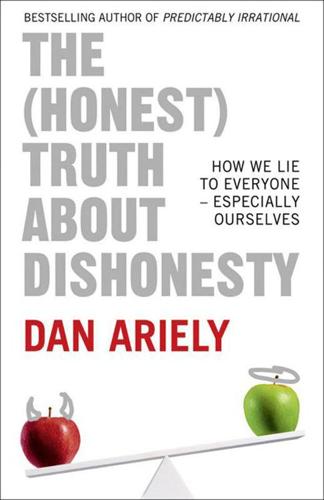
The (Honest) Truth About Dishonesty: How We Lie to Everyone, Especially Ourselves
by
Dan Ariely
Published 27 Jun 2012
And as night falls, we are particularly likely to succumb to our desires (think of late-night snacking as the culmination of a day’s worth of resisting temptation). WHEN JUDGES GET TIRED In case you’ve got a parole hearing coming up, make sure it’s first thing in the morning or right after lunchtime. Why? According to a study by Shai Danziger (a professor at Tel Aviv University), Jonathan Levav (a professor at Stanford University), and Liora Avnaim-Pesso (a professor at Ben-Gurion University of the Negev), judges on parole boards tend to grant parole more frequently when they are most refreshed. Investigating a large set of parole rulings in Israel, the researchers found that parole boards were more likely to grant parole during their first cases of the day and just after their lunch breaks.
…
Carl Elliot, White Coat, Black Hat: Adventures on the Dark Side of Medicine (Boston: Beacon Press, 2010). Chapter 4. Why We Blow It When We’re Tired Based on Mike Adams, “The Dead Grandmother/Exam Syndrome and the Potential Downfall of American Society,” The Connecticut Review (1990). Shai Danziger, Jonathan Levav, and Liora Avnaim-Pesso, “Extraneous Factors in Judicial Decisions,” Proceedings of the National Academy of Sciences of the United States of America (2011). Nicole L. Mead, Roy F. Baumeister, Francesca Gino, Maurice E. Schweitzer, and Dan Ariely, “Too Tired to Tell the Truth: Self-Control Resource Depletion and Dishonesty,” Journal of Experimental Social Psychology (2009).
…
Abagnale, Frank, 173 academia: conflicts of interest in, 82, 84–85 financial services industry’s influence in, 84–85 group-based projects in, 217–18 pharmaceutical companies’ influence in, 82 academic credentials, misrepresentation of, 135–36, 153, 154 accounting firms: collaborative dishonesty in, 218–21 “in good faith” notion and, 219–20 Adam and Eve, 98 Adams, Mike, 107 advertising agencies, link between creativity and dishonesty in, 186–87 aesthetic preferences, impact of favors on, 75–77 Afghanistan War, 152 altruistic cheating, 222–23, 225–26, 232 supervisory effect and, 227–28 American Medical Association, 79 Amir, On, 15, 18, 31–32, 39, 262 Apple, 184 atheists, swearing on bible and, 40, 41, 42 Atlantic, 214–15 Austen, Jane, 154–55 Avnaim-Pesso, Liora, 102 Ayal, Shahar, 197, 225, 263 bacterial infections, 192–93 Balleisen, Ed, 188 bankers, cheating among politicians vs., 243 banks: small misbehaviors of, 240 see also financial services industry Barkan, Racheli, 21, 23, 262 Barlow, John Perry, 1, 2 baseball, steroids in, 156 Bateson, Melissa, 224 Baumeister, Roy, 100, 104, 262–63 Baylor College of Medicine, 75–77 Bazerman, Max, 45, 260 Becker, Gary, 3–4, 14, 26 Be’er Sheva, Israel, farmer’s market in, 23–24 being caught, probability of, 4–5, 13, 14, 27 varying, in matrix task, 20–22 benevolent behavior, 23–24 Bible, as moral reminder, 40, 41, 42 billable hours, overstating of, 35–37 blind customers, benevolent behavior toward, 23–26 brain: higher connectivity in, 170 left-right split in, 164–65 of pathological liars, 169–70 Broken Windows Theory, 214–15, 249 businesspeople, self-monitoring of, 56–57 business schools, 248 group-based projects in, 217–18 cab drivers, benevolent behavior of, toward blind customer, 25–26 CAD/CAM equipment, in dentistry, 67–71 Cain, Daylian, 89 Canada, cheating in, 242 care for customers, in illegal businesses, 138–39 car mechanics, 93 Carnegie Mellon University, 197–207 car recommendation software, “fixing” answers in, 166–67 Cary, Apoth E., 246 cashless society, implications for dishonesty in, 34 Catch Me If You Can (Abagnale), 173 certificates for (false) achievements, 153–54 Chance, Zoë, 145, 264 charitable behavior, 23–24 cheating: aggressive cheaters and, 239 altruistic, 222–23, 225–26, 227–28, 232 being made blatantly aware of, 156–57 being watched and, 223–25, 227 collaborative, see collaborative cheating desire to benefit from, 12–14, 27, 29, 237 ego depletion, 104–6, 111–12 fake products’ impact on, 125–31 in golf, 55–65 honor codes and, 41–45 increasing creativity to increase level of, 184–87 as infection, 191–216; see also infectious nature of cheating infidelity and, 244–45 on IQ-like tests, self-deception and, 145–49, 151, 153–54, 156–57 reducing amount of, 39–51, 248–54 removing oneself from tempting situation and, 108–11 signing forms at top and, 46–51 Ten Commandments and, 39–40, 41, 44 what-the-hell effect and, 127–31, 136 see also dishonesty China, cheating in, 241–42 Chloé accessories, studies with, 123–34 Civil War veterans, 152 classes, infectious nature of cheating in, 195–97 Coca-Cola, stealing money vs., 32–33 cognitive dissonance, 81 cognitive load: ability to resist temptation and, 99–100 judges’ parole rulings and, 102–3 Cognitive Reflection Test (CRT), 173–74 coin logic, 167–68 collaborative cheating, 217–35 altruism and, 222–23, 225–26, 227–28, 232 being watched or monitored and, 223–25, 227–28, 234–35 emphasis on working as group or team and, 217–18 infectious nature of cheating in relation to, 221–22 social utility and, 222–23 companies: being one step removed from money and, 34–37 irrationality of, 51 see also corporate dishonesty compliments, insincere, 159 conflicts of interest, 67–95, 238, 248 in academia, 82, 84–85 in dentistry, 67–71, 93, 94, 230 disclosure and, 88–92 dots task and, 129 eradication of, 92–95 exclusion of experimental data and, 86–88 expert witnesses and, 85–86 in financial services industry, 83–85, 93, 94 governmental lobbyists and, 77–78, 94 honesty threshold and, 130–31 inherent inclination to return favors and, 74–75 medical procedures and, 71–74, 92–94, 229 pharmaceutical companies’ influence in academia and, 82 pharma reps and, 78–82 what-the-hell effect and, 129–31 congressional staffers, cheating among, 243 Congress members, PAC money misused by, 208–10 contractors, 93 Conway, Alan, 150–51 Cooper, Cynthia, 215 Cornell University, 250–51 corpora callosa, 164–65 corporate dishonesty: cheating a little bit and, 239–40 Enron collapse and, 1–3, 192, 207, 215, 234 recent spread of, 192, 207–8 cost-benefit analysis, 4–5, 26–27, 237, 239 infectious nature of cheating and, 201–3, 205 see also Simple Model of Rational Crime counterfeits, see fake products creativity, 88, 163–89, 238 brain structure and, 164–65 dark side of, 187–89 fooling oneself and, 165–67 increasing, to increase level of cheating, 184–87 infidelity and, 244 intelligence vs., as predictor of dishonesty, 172–77 link between dishonesty and, 170–72, 186–89 logical-sounding rationales for choices and, 163–64 measures of, 171 moral flexibility and, 186–87 pathological liars and, 168–70 revenge and, 177–84 credit card companies, 239–40 crime, reducing, 52 cultural differences, 240–43 Danziger, Shai, 102 decision making: creating efficient process for, 167–68 effectiveness of group work in, 217–18 rationalization process and, 163–67 Denfield, George, 75 dentists: continuity of care and, 228–31 treating patients using equipment that they own, 67–68, 93–94 unnecessary work and, 67–71 depletion, see ego depletion dieting, 98, 109, 112–13, 114–15 what-the-hell effect and, 127, 130 “dine-and-dash,” 79 diplomas, lying about, 135–36, 153, 154 disabled person, author’s adoption of role of, 143–44 disclosure, 88–92, 248 study on impact of, 89–92 discounting, fixed vs. probabilistic, 194 dishonesty: causes of, 3–4, 5 collaborative, see collaborative cheating cultural differences and, 240–43 discouraging small and ubiquitous forms of, 239–40 importance of first act of, 137 infectious nature of, 191–216; see also infectious nature of cheating intelligence vs. creativity as predictor of, 172–77 link between creativity and, 170–72, 186–89 opportunities for, passed up by vast majority, 238 of others, fake products and assessing of, 131–34 rational and irrational forces in, 254 reducing amount of, 39–51, 248–54 society’s means for dealing with, 4–5 summary of forces that shape (figure), 245 when traveling, 183n see also cheating dissertation proposals and defenses, 101 distance factors, 238 in golf, 58–59 stealing Coca-Cola vs. money and, 32–33 token experiment and, 33–34 doctors: consulting for or investing in drug companies, 82, 93 continuity of care and, 228–29 lecturing about drugs, 81 pharma reps and, 78–82 treating or testing patients with equipment that they own, 92–94 Dodd-Frank Wall Street Reform and Consumer Protection Act, 234 dots task: conflict of interest and, 129 description of, 127–29 link between creativity and dishonesty and, 171–72, 185–86 what-the-hell effect and, 129–31 downloads, illegal, 137–39 dressing above one’s station, 120–21 Ebbers, Bernie, 13 ego depletion, 100–116, 238, 249 basic idea behind, 101 cheating and, 104–6 in everyday life, 112–16 removing oneself from tempting situations and, 108–11, 115–16 of Sex and the City’s Samantha Jones, 103 sometimes succumbing to temptation and, 114–15 sudden deaths among students’ grandmothers at exam time and, 106–8 ego motivation, 27 England, cheating in, 242 Enron, 1–3, 192, 207, 215, 234 essay mills, 210–13 exams, sudden deaths among students’ grandmothers and, 106–8 exhaustion, 249 consumption of junk food and, 97–98 judges’ parole rulings and, 102–3 see also ego depletion experimental data, exclusion of, 86–88 expert witnesses, 85–86 explanations, logical-sounding, creation of, 163–65 external signaling, 120–22 dressing above one’s station and, 120–21 fake products and, 121–22 failures, tendency to turn blind eye to, 151 “fair,” determination of what is, 57 fake products, 119, 121–40, 238 illegal downloads and, 137–39 misrepresentation of academic credentials and, 135–36 rationalizations and, 134–35 self-signaling and, 123–26, 135 signaling value of authentic version diluted by, 121–22 suspiciousness of others and, 131–34 what-the-hell effect and, 127–31, 135 farmer’s market, benevolent behavior toward blind customer in, 23–24 fashion, 117–26 counterfeit goods and, 119, 121–22, 121–40, 123–26; see also fake products dressing above one’s station and, 120–21 external signaling and, 120–22 self-signaling and, 122–26 Fastow, Andrew, 2 favors, 74–82 aesthetic preferences and, 75–77 governmental lobbyists and, 77–78 inherent inclination to return, 74–75 pharma reps and, 78–82 see also conflicts of interest Fawal-Farah, Freeda, 117, 118 FBI, 215 Fedorikhin, Sasha, 99–100 Feynman, Richard, 165 financial crisis of 2008, 83–85, 192, 207, 234, 246–47 financial favors, aesthetic preferences and, 77 financial services industry: anonymous monitoring and, 234–35 cheating among politicians vs., 243 conflicts of interest in, 83–85, 93, 94 government regulation of, 234 fishing, lying about, 28 Frederick, Shane, 173 friends, invited to join in questionable behavior, 195 fudge factor theory, 27–29, 237 acceptable rate of lying and, 28–29, 91 distance between actions and money and, 34–37 getting people to cheat less and, 39–51 infidelity and, 244 rationalization of selfish desires and, 53 stealing Coca-Cola vs. money and, 32–33 Gazzaniga, Michael, 164–65 Generally Accepted Accounting Principles (GAAP), 219–20 generous behavior, 23–24 Get Rich Cheating (Kreisler), 14 Gilovich, Tom, 250, 263–64 Gino, Francesca, 45, 104, 123, 127, 131, 145, 170, 184, 197, 225, 234–35, 242, 258–59 Glass, Ira, 6 Gneezy, Ayelet, 177, 257–58 golf, 55–65 cheating by “average golfer” vs. study participants and, 63–64 mistallying score in, 61–64 moving location of ball in, 58–59, 63 mulligans in, 60–61, 63–64 self-monitoring in, 56–57 survey on cheating in, 57–64 government regulations, 234 grandmothers, sudden deaths of, at exam time, 106–8 gray matter, 169–70 Green, Jennifer Wideman, 117 grocery shopping, ego depletion and, 109, 112–13 group or team work, 220–23 performance unaffected by, 233 possible benefits of, 223 predominance of, in professional lives, 217–18, 235 social utility and, 222–23 see also collaborative cheating Grüneisen, Aline, 210–11, 257 guilt, self-inflicted pain and, 250–52 Harford, Tim, 3–4 Harper’s Bazaar, 117–18 Harvard Medical School, 82 Harvey, Ann, 75 Henn, Steve, 209 heretics, external signaling of, 120 Hinduism, 25 honesty threshold, 130–31 honor codes, 41–45, 204 ideological organizations, 232n “I knew it all along” feeling, 149 illegal businesses, loyalty and care for customers in, 138–39 impulsive (or emotional) vs. rational (or deliberative) parts of ourselves, 97–106 cognitive load and, 99–100 ego depletion and, 100–106 exhaustion and, 97–98 Inbar, Yoel, 250, 264 infectious nature of cheating, 191–216, 249 bacterial infections compared to, 192–93 in class, 195–97 collaborative cheating in relation to, 221–22 Congress members’ misuse of PAC money and, 208–10 corporate dishonesty and, 192, 207–8 cost-benefit analysis and, 201–3, 205 essay mills and, 210–13 matrix task and, 197–204 positive side of moral contagion and, 215–16 regaining ethical health and, 214–15 slow and subtle process of accretion in, 193–94, 214–15 social norms and, 195, 201–3, 205–7, 209 social outsiders and, 205–7 vending machine experiment and, 194–95 infidelity, 244–45 “in good faith” notion, 219–20 Inside Job, 84–85 insurance claims, 49–51 intelligence: creativity vs., as predictor of dishonesty, 172–77 measures of, 173–75 IQ-like tests, cheating and self-deception on, 145–49 certificates emphasizing (false) achievement and, 153–54 increasing awareness of cheating and, 156–57 individuals’ tendency to turn a blind eye to their own failures and, 151 IRS, 47–49 Islam, 249 Israel, cheating in, 241 Italy, cheating in, 242 Jerome, Jerome K., 28 Jobs, Steve, 184 Jones, Bobby, 56 Jones, Marilee, 136 Judaism, 45, 249 judges, exhausted, parole decisions and, 102–3 junk food, exhaustion and consumption of, 97–98 Keiser, Kenneth, 135 Kelling, George, 214–15 John F.

Black Box Thinking: Why Most People Never Learn From Their Mistakes--But Some Do
by
Matthew Syed
Published 3 Nov 2015
Trial by jury, for example, is often held up as sacrosanct, and it may be the most effective form of deliberation in criminal cases. But shouldn’t it be tested? If juries are coming to the wrong conclusions in predictable ways, doesn’t it make sense that procedures should be reformed so that these latent problems are addressed? To see how, consider an experiment not on juries, but on judges. Over a ten-month period, Shai Danziger, a neuroscientist at Tel Aviv University, and colleagues analyzed the parole decisions of eight Israeli judges.18 Every day each judge considered between fourteen and thirty-five real-life cases, spending around six minutes on each decision. The verdicts represented 40 percent of the parole decisions made in Israel over the ten-month period.
…
Dwyer, Scheck, and Neufeld, Actual Innocence. 15. http://www.miamiherald.com/incoming/article1953372.html. 16. Committee on Identifying the Needs of the Forensic Science Community National Research Council, “Strengthening Forensic Science in the United States,” report, 2009. 17. http://www.nytimes.com/2014/12/02/opinion/why-our-memory-fails-us.html. 18. Shai Danziger, Jonathan Levav, and Liora Avnaim-Pesso, “Extraneous Factors in Judicial Decisions,” Proceedings of the National Academy of Sciences. 19. http://blogs.discovermagazine.com/notrocketscience/2011/04/11/justice-is-served-but-more-so-after-lunch-how-food-breaks-sway-the-decisions-of-judges/#.VYaU80Yk-So. 20. http://articles.chicagotribune.com/2014-06-10/news/chi-dna-links-murder-and-rape-of-holly-staker-11-to-second-murder-8-years-later-20140610_1_holly-staker-dna-evidence-dna-match. 21.
…
(Catmull), 207 creativity and innovation, 182–213 as act of synthesis, 199 brainstorming and, 196–97 connectivity and, 199, 204 as context-dependent, 201–2 discipline and, 205–6 dissent and criticize approach to, 197, 200–201, 207, 209 Dyson on creative process, 192–95, 196, 198, 202 education system and, 211–12 environments conducive to, 200–201 and multiples, 201–2 at Pixar, 207–10 as response to problem, 195–200 Crew Resource Management, 30, 39 Criminal Cases Review Commission, UK, 117 criminal justice system, 65–71, 114–21, 282 parole decisions and, 118–19 randomized control trials (RCTs), lack of, 158 reforms and, 115–17, 118–21 Scared Straight program and, 150–54, 159–67 trial by jury and, 118, 119 wrongful convictions (See wrongful convictions) criticism, in creative process, 197, 207, 209 cults, 71–73, 74 culture, 11, 13 aviation and, 20, 25–27, 58 of blame (See blame) health care and, 16, 49–50, 53, 54–55, 57, 58–59, 105–6 of openness, 229–31, 234–35 cumulative selection/adaptation, 128–29, 130, 292 Cuneus, Andreas, 201 cycling, 171–73, 178, 179 Daily Beast, 166 Danziger, Shai, 118–19 Darwin, Charles, 201 data, 37 Dattner, Ben, 233 Dawkins, Richard, 128–29 deception, 87, 88 decision making, 11 Deep Blue, 134 Dekker, Sidney, 13, 227, 239 deliberate practice, 47 denial cognitive dissonance, as response to, 74 failure and, 18, 71 in prosecutorial responses to exonerating DNA evidence, 78–83 Diehl, Alan, 27, 28, 29, 30 Disch, Joanne, 10 discipline, 205–6 disclosure, 16, 25–26, 88–89 disposition effect, 101, 264 dissent and debate, in creative process, 197, 200–201, 207, 209 Divine, Jamie, 184 DNA evidence, 68–71, 77, 79–83, 84, 120 dogmatic tradition, 277, 278 Dorman, R.

You Are Now Less Dumb: How to Conquer Mob Mentality, How to Buy Happiness, and All the Other Ways to Outsmart Yourself
by
David McRaney
Published 29 Jul 2013
All this talk about mental energy, impulses, and cultural judgment sounds as if we are validating the ideas of the id, ego, and superego, right? Well, that’s why psychologists have been working so hard to pinpoint what is being depleted when we speak of ego depletion, and according to one hypothesis it may just be the fuel your brain gains from digested food: glucose. A study published in 2010 conducted by Jonathan Leval, Shai Danziger, and Liora Avniam-Pesso looked at 1,112 judicial rulings concerning prisoner paroles over the course of ten months. They found that right after breakfast and lunch, your chances of getting paroled were at their highest. On average, the judges granted parole to around 60 percent of prisoners right after the judge had eaten a meal.
…
The New York Times, March 23, 1986. Web: http://www.nytimes.com/1986/03/23/books/freud-the-greatest-modern-writer .html?pagewanted=all. Carey, Benedict. “Analyze These.” The New York Times, Apr. 25, 2006. Web: Apr. 2012, www.nytimes.com/2006/04/25/health/psychology/25freud.html?pagewanted=print. Danziger, Shai, Jonathan Levav, and Liora Avnaim-Pesso. “Extraneous Factors in Judicial Decisions.” Ed. Daniel Kahneman. Proceedings of the National Academy of Sciences of the United States of America 108, no. 17 (2011): 6889–892. Floyd, Barbara. From Quackery to Bacteriology: The Emergence of Modern Medicine in 19th Century America.

Adaptive Markets: Financial Evolution at the Speed of Thought
by
Andrew W. Lo
Published 3 Apr 2017
A more relevant example of how narrative is shaped involves “decision fatigue,” a phenomenon recently and dramatically documented among a group of judges presiding over parole hearings for Israeli prisoners.36 These judges, averaging over twenty years of experience, would hear fourteen to thirty-five cases a day, 40 percent of all parole requests in Israeli prisons. Each day, the judges had two food breaks that divided the day into three distinct sessions. Three business-school researchers—Shai Danziger, Jonathan Levav, and Liora Avnaim-Pesso—found a striking pattern over these sessions: the judges rendered favorable parole decisions about 65 percent of the time at the start of a session, but the percentage would systematically decline to nearly 0 percent by the end of each session. After the food breaks—a late-morning snack of a sandwich and a piece of fruit, and then a lunch break—the judges were refreshed and ready to resume their complex deliberations; hence parole rates at the beginning of the following session were considerably higher.
…
In Frontal Lobe Function and Dysfunction, edited by Harvey S. Levin, Howard M. Eisenberg, and Arthur Lester Benton, 217–229. New York: Oxford University Press. ___. 1998. “Somatic Markers and the Guidance of Behavior.” In Human Emotions: A Reader, edited by Jennifer M. Jenkins, Keith Oatley, and Nancy L. Stein, 122–135. Oxford: Blackwell. Danziger, Shai, Jonathan Levav, and Liora Avnaim-Pesso. 2011a. “Extraneous Factors in Judicial Decisions.” Proceedings of the National Academy of Sciences 108: 6889–6892. ___. 2011b. “Reply to Weinshall-Margel and Shapard: Extraneous Factors in Judicial Decisions Persist.” Proceedings of the National Academy of Science 108, no. 42: E834.
…
Bell (1927), 171 Bucy, Paul, 78–79 Buffett, Warren, 6, 11, 225, 231, 234–235, 286, 301, 407 Burch, Robert L., 234 Burnham, Terry, 337–338 “butterfly effect,” 361 Caisse d’Epargne, 61 California Public Employees’ Retirement System, 409 Camping, Harold, 342 Canada, 242 cancer, 400–410 Candide (Voltaire), 139 candlestick charting, 17, 23 cap-and-trade system, 416 Capital Asset Pricing Model (CAPM), 27, 212, 249, 251–252, 263, 267, 282 capital requirements, 62, 306–308, 311, 368 capitalism, 7, 89, 412 carbon tax, 416 Cardano, Girolamo, 17, 21, 27 Carlsson, Arvid, 88 Carnegie Mellon University, 33–34, 172, 178, 181 Carroll, Lewis, 322 Carter, Jimmy, 401 Carville, James, 9–10 Case, Karl, 314 Case-Shiller Index, 314 Caspi, Avshalom, 160 cause and effect, 128 Caves, Dick, 127 Cayne, Jimmy, 304, 305 cell phones, 246–248 Center for Adaptive Behavior and Cognition (ABC), 216 Center for Research in Security Prices (CRSP), 254 central banks, 230, 291, 301, 368, 391 Ceradase, 419 Cerezyme, 419 Challenger (space shuttle), 12–16, 24, 38 Chan, Nicholas, 41, 317 chaos theory, 278 Chen, Jiulin, 61 chess, 112, 131, 179 Chicago Board Options Exchange (CBOE), 270, 356–358 Chicago Mercantile Exchange (CME), 360, 368–369, 370 Chicago School, 25 Chicxulub meteor, 241–242 chief risk officers (CROs), 392 chimpanzee, 150, 153, 337 China, 258, 409–410, 411, 412 China Aviation Oil, 61 Citigroup, 318–319 Clark, Luke, 91 climate change, 364, 416 Clinton, Bill, 10, 85 cobweb theorem, 31, 33, 34, 109 Coca Cola, 284–285, 384 cocaine, 89, 90, 91 Coffee, John C., 309–310 Cohn, Alain, 352–353 Cold War, 52 collateralized debt obligations (CDOs), 298, 299, 343 Collier, Paul, 412 Colossal Failure of Common Sense, A (McDonald and Robinson), 317–318 commercial banks, 293, 301, 308, 335, 371 commodities trading, 20, 34 Commodity Futures Trading Commission (CFTC), 359, 360, 377 common law, 372 competition, 3, 153, 168, 214, 217 complexity, 217, 278, 361–364, 372, 374 computational biochemistry, 240 computerized axial tomography (CAT), 78, 102 confirmation bias, 305–306 confounding variables, 139 congenital analgesia, 378 Congo Free State, 412 consilience, 215 Consolidated Supervised Entities, 306 contrarian strategy, 290, 316, 325 controlled experiments, 47, 139 Cook, William, 236 cooperation, 164–165, 168, 214, 336, 340 Coppersmith, Don, 239 core, in networks, 374–376 corn, 28–29, 30 corpus callosum, 113–114 Cortana, 396 cortex, 81, 130; anterior cingulate, 86, 105; prefrontal, see prefrontal cortex cortisol, 81 Cosmides, Leda, 173, 174 cost-benefit analysis, 104, 119, 121–122, 169, 316 Cost Matters Hypothesis, 265, 397 Cotzias, George, 88 Countrywide Financial, 325 coupling, 321–322, 361, 372–374 creative destruction, 219 credit default swaps (CDSs), 298, 300, 379, 407 credit rating agencies, 301 Crick, Francis, 137, 144, 401 Cronqvist, Henrik, 161 crowded trades, 291–292, 293 crowdfunding, 356 cryptography, 238–239, 385 currency trading, 12–16, 24, 38 D. E. Shaw & Co., 236–241, 277, 284, 293 D. E. Shaw Research, 240 Dahan, Ely, 40, 41 Damasio, Antonio, 102–104, 183, 186 Danziger, Shai, 166, 167 Darwin, Charles, 8, 137–140, 214, 217, 218, 226–227, 244 Data Encryption Standard (DES), 238–239 Dawkins, Richard, 142 Deason,, Stephen, 354 de Becker, Gavin, 1 Debreu, Gerard, 212 debt ratios, 300, 309–311 decimalization, 327–329 decision fatigue, 166–167 Deep Blue (chess computer), 112, 131–132 deep parameters, 203 delayed gratification, 119, 120–121 delta-hedging strategy, 274 De Nederlandsch Bank (DNB), 391 depression, 159, 160 derivatives, 10, 212, 243, 266, 270, 371, 407; complexity of, 11, 321; options and, 97, 357; regulation of, 7, 308; volume of, 358 Descartes’ Error (Damasio), 102 Desrochers, Theresa M., 121–122 deterministic strategy, 190, 191, 192, 197, 200 de Waal, Frans, 337 Diagnostic and Statistical Manual of Mental Disorders (DSM), 125–126 Dictator Game, 337 differential reproduction, 146, 152, 187 Digital Age, 163 discount rate, 98, 416 DNA, 187; database of, 402–403; discovery of, 137, 144, 401; evolutionary theory confirmed by, 137–138; of identical twins, 159, 161; mutations of, 418–419; of related species, 136, 146, 150, 151–152 Dobzhansky, Theodosius, 140 Dodd, David, 234 Dodd-Frank Wall Street Reform and Consumer Protection Act (2010), 228, 329, 375 dodo, 149 dopamine, 87–88, 89, 91, 97, 99, 409 dopamine dysregulation syndrome, 186 dorsal anterior cingulate cortex, 86 dorsolateral prefrontal cortex, 337, 339 double blind tests, 123 Double Eagle Fund, 234 doubling down, 60–61, 62, 84, 189 Douglas, Michael, 345, 346 Dow Jones Industrial Average, 22, 358 Down syndrome, 111 Duchenne muscular dystrophy, 409 Dunedin Multidisciplinary Health and Development Study, 160 Dyck, I.

The Irrational Bundle
by
Dan Ariely
Published 3 Apr 2013
And as night falls, we are particularly likely to succumb to our desires (think of late-night snacking as the culmination of a day’s worth of resisting temptation). WHEN JUDGES GET TIRED In case you’ve got a parole hearing coming up, make sure it’s first thing in the morning or right after lunchtime. Why? According to a study by Shai Danziger (a professor at Tel Aviv University), Jonathan Levav (a professor at Stanford University), and Liora Avnaim-Pesso (a professor at Ben-Gurion University of the Negev), judges on parole boards tend to grant parole more frequently when they are most refreshed. Investigating a large set of parole rulings in Israel, the researchers found that parole boards were more likely to grant parole during their first cases of the day and just after their lunch breaks.
…
Moore, “When Sunlight Fails to Disinfect: Understanding the Perverse Effects of Disclosing Conflicts of Interest,” Journal of Consumer Research (in press). Carl Elliot, White Coat, Black Hat: Adventures on the Dark Side of Medicine (Boston: Beacon Press, 2010). Chapter 4. Why We Blow It When We’re Tired Based on Mike Adams, “The Dead Grandmother/Exam Syndrome and the Potential Downfall of American Society,” The Connecticut Review (1990). Shai Danziger, Jonathan Levav, and Liora Avnaim-Pesso, “Extraneous Factors in Judicial Decisions,” Proceedings of the National Academy of Sciences of the United States of America (2011). Nicole L. Mead, Roy F. Baumeister, Francesca Gino, Maurice E. Schweitzer, and Dan Ariely, “Too Tired to Tell the Truth: Self-Control Resource Depletion and Dishonesty,” Journal of Experimental Social Psychology (2009).
…
Abagnale, Frank, 173 academia: conflicts of interest in, 82, 84–85 financial services industry’s influence in, 84–85 group-based projects in, 217–18 pharmaceutical companies’ influence in, 82 academic credentials, misrepresentation of, 135–36, 153, 154 accounting firms: collaborative dishonesty in, 218–21 “in good faith” notion and, 219–20 Adam and Eve, 98 Adams, Mike, 107 advertising agencies, link between creativity and dishonesty in, 186–87 aesthetic preferences, impact of favors on, 75–77 Afghanistan War, 152 altruistic cheating, 222–23, 225–26, 232 supervisory effect and, 227–28 American Medical Association, 79 Amir, On, 15, 18, 31–32, 39, 262 Apple, 184 atheists, swearing on bible and, 40, 41, 42 Atlantic, 214–15 Austen, Jane, 154–55 Avnaim-Pesso, Liora, 102 Ayal, Shahar, 197, 225, 263 bacterial infections, 192–93 Balleisen, Ed, 188 bankers, cheating among politicians vs., 243 banks: small misbehaviors of, 240 see also financial services industry Barkan, Racheli, 21, 23, 262 Barlow, John Perry, 1, 2 baseball, steroids in, 156 Bateson, Melissa, 224 Baumeister, Roy, 100, 104, 262–63 Baylor College of Medicine, 75–77 Bazerman, Max, 45, 260 Becker, Gary, 3–4, 14, 26 Be’er Sheva, Israel, farmer’s market in, 23–24 being caught, probability of, 4–5, 13, 14, 27 varying, in matrix task, 20–22 benevolent behavior, 23–24 Bible, as moral reminder, 40, 41, 42 billable hours, overstating of, 35–37 blind customers, benevolent behavior toward, 23–26 brain: higher connectivity in, 170 left-right split in, 164–65 of pathological liars, 169–70 Broken Windows Theory, 214–15, 249 businesspeople, self-monitoring of, 56–57 business schools, 248 group-based projects in, 217–18 cab drivers, benevolent behavior of, toward blind customer, 25–26 CAD/CAM equipment, in dentistry, 67–71 Cain, Daylian, 89 Canada, cheating in, 242 care for customers, in illegal businesses, 138–39 car mechanics, 93 Carnegie Mellon University, 197–207 car recommendation software, “fixing” answers in, 166–67 Cary, Apoth E., 246 cashless society, implications for dishonesty in, 34 Catch Me If You Can (Abagnale), 173 certificates for (false) achievements, 153–54 Chance, Zoë, 145, 264 charitable behavior, 23–24 cheating: aggressive cheaters and, 239 altruistic, 222–23, 225–26, 227–28, 232 being made blatantly aware of, 156–57 being watched and, 223–25, 227 collaborative, see collaborative cheating desire to benefit from, 12–14, 27, 29, 237 ego depletion, 104–6, 111–12 fake products’ impact on, 125–31 in golf, 55–65 honor codes and, 41–45 increasing creativity to increase level of, 184–87 as infection, 191–216; see also infectious nature of cheating infidelity and, 244–45 on IQ-like tests, self-deception and, 145–49, 151, 153–54, 156–57 reducing amount of, 39–51, 248–54 removing oneself from tempting situation and, 108–11 signing forms at top and, 46–51 Ten Commandments and, 39–40, 41, 44 what-the-hell effect and, 127–31, 136 see also dishonesty China, cheating in, 241–42 Chloé accessories, studies with, 123–34 Civil War veterans, 152 classes, infectious nature of cheating in, 195–97 Coca-Cola, stealing money vs., 32–33 cognitive dissonance, 81 cognitive load: ability to resist temptation and, 99–100 judges’ parole rulings and, 102–3 Cognitive Reflection Test (CRT), 173–74 coin logic, 167–68 collaborative cheating, 217–35 altruism and, 222–23, 225–26, 227–28, 232 being watched or monitored and, 223–25, 227–28, 234–35 emphasis on working as group or team and, 217–18 infectious nature of cheating in relation to, 221–22 social utility and, 222–23 companies: being one step removed from money and, 34–37 irrationality of, 51 see also corporate dishonesty compliments, insincere, 159 conflicts of interest, 67–95, 238, 248 in academia, 82, 84–85 in dentistry, 67–71, 93, 94, 230 disclosure and, 88–92 dots task and, 129 eradication of, 92–95 exclusion of experimental data and, 86–88 expert witnesses and, 85–86 in financial services industry, 83–85, 93, 94 governmental lobbyists and, 77–78, 94 honesty threshold and, 130–31 inherent inclination to return favors and, 74–75 medical procedures and, 71–74, 92–94, 229 pharmaceutical companies’ influence in academia and, 82 pharma reps and, 78–82 what-the-hell effect and, 129–31 congressional staffers, cheating among, 243 Congress members, PAC money misused by, 208–10 contractors, 93 Conway, Alan, 150–51 Cooper, Cynthia, 215 Cornell University, 250–51 corpora callosa, 164–65 corporate dishonesty: cheating a little bit and, 239–40 Enron collapse and, 1–3, 192, 207, 215, 234 recent spread of, 192, 207–8 cost-benefit analysis, 4–5, 26–27, 237, 239 infectious nature of cheating and, 201–3, 205 see also Simple Model of Rational Crime counterfeits, see fake products creativity, 88, 163–89, 238 brain structure and, 164–65 dark side of, 187–89 fooling oneself and, 165–67 increasing, to increase level of cheating, 184–87 infidelity and, 244 intelligence vs., as predictor of dishonesty, 172–77 link between dishonesty and, 170–72, 186–89 logical-sounding rationales for choices and, 163–64 measures of, 171 moral flexibility and, 186–87 pathological liars and, 168–70 revenge and, 177–84 credit card companies, 239–40 crime, reducing, 52 cultural differences, 240–43 Danziger, Shai, 102 decision making: creating efficient process for, 167–68 effectiveness of group work in, 217–18 rationalization process and, 163–67 Denfield, George, 75 dentists: continuity of care and, 228–31 treating patients using equipment that they own, 67–68, 93–94 unnecessary work and, 67–71 depletion, see ego depletion dieting, 98, 109, 112–13, 114–15 what-the-hell effect and, 127, 130 “dine-and-dash,” 79 diplomas, lying about, 135–36, 153, 154 disabled person, author’s adoption of role of, 143–44 disclosure, 88–92, 248 study on impact of, 89–92 discounting, fixed vs. probabilistic, 194 dishonesty: causes of, 3–4, 5 collaborative, see collaborative cheating cultural differences and, 240–43 discouraging small and ubiquitous forms of, 239–40 importance of first act of, 137 infectious nature of, 191–216; see also infectious nature of cheating intelligence vs. creativity as predictor of, 172–77 link between creativity and, 170–72, 186–89 opportunities for, passed up by vast majority, 238 of others, fake products and assessing of, 131–34 rational and irrational forces in, 254 reducing amount of, 39–51, 248–54 society’s means for dealing with, 4–5 summary of forces that shape (figure), 245 when traveling, 183n see also cheating dissertation proposals and defenses, 101 distance factors, 238 in golf, 58–59 stealing Coca-Cola vs. money and, 32–33 token experiment and, 33–34 doctors: consulting for or investing in drug companies, 82, 93 continuity of care and, 228–29 lecturing about drugs, 81 pharma reps and, 78–82 treating or testing patients with equipment that they own, 92–94 Dodd-Frank Wall Street Reform and Consumer Protection Act, 234 dots task: conflict of interest and, 129 description of, 127–29 link between creativity and dishonesty and, 171–72, 185–86 what-the-hell effect and, 129–31 downloads, illegal, 137–39 dressing above one’s station, 120–21 Ebbers, Bernie, 13 ego depletion, 100–116, 238, 249 basic idea behind, 101 cheating and, 104–6 in everyday life, 112–16 removing oneself from tempting situations and, 108–11, 115–16 of Sex and the City’s Samantha Jones, 103 sometimes succumbing to temptation and, 114–15 sudden deaths among students’ grandmothers at exam time and, 106–8 ego motivation, 27 England, cheating in, 242 Enron, 1–3, 192, 207, 215, 234 essay mills, 210–13 exams, sudden deaths among students’ grandmothers and, 106–8 exhaustion, 249 consumption of junk food and, 97–98 judges’ parole rulings and, 102–3 see also ego depletion experimental data, exclusion of, 86–88 expert witnesses, 85–86 explanations, logical-sounding, creation of, 163–65 external signaling, 120–22 dressing above one’s station and, 120–21 fake products and, 121–22 failures, tendency to turn blind eye to, 151 “fair,” determination of what is, 57 fake products, 119, 121–40, 238 illegal downloads and, 137–39 misrepresentation of academic credentials and, 135–36 rationalizations and, 134–35 self-signaling and, 123–26, 135 signaling value of authentic version diluted by, 121–22 suspiciousness of others and, 131–34 what-the-hell effect and, 127–31, 135 farmer’s market, benevolent behavior toward blind customer in, 23–24 fashion, 117–26 counterfeit goods and, 119, 121–22, 121–40, 123–26; see also fake products dressing above one’s station and, 120–21 external signaling and, 120–22 self-signaling and, 122–26 Fastow, Andrew, 2 favors, 74–82 aesthetic preferences and, 75–77 governmental lobbyists and, 77–78 inherent inclination to return, 74–75 pharma reps and, 78–82 see also conflicts of interest Fawal-Farah, Freeda, 117, 118 FBI, 215 Fedorikhin, Sasha, 99–100 Feynman, Richard, 165 financial crisis of 2008, 83–85, 192, 207, 234, 246–47 financial favors, aesthetic preferences and, 77 financial services industry: anonymous monitoring and, 234–35 cheating among politicians vs., 243 conflicts of interest in, 83–85, 93, 94 government regulation of, 234 fishing, lying about, 28 Frederick, Shane, 173 friends, invited to join in questionable behavior, 195 fudge factor theory, 27–29, 237 acceptable rate of lying and, 28–29, 91 distance between actions and money and, 34–37 getting people to cheat less and, 39–51 infidelity and, 244 rationalization of selfish desires and, 53 stealing Coca-Cola vs. money and, 32–33 Gazzaniga, Michael, 164–65 Generally Accepted Accounting Principles (GAAP), 219–20 generous behavior, 23–24 Get Rich Cheating (Kreisler), 14 Gilovich, Tom, 250, 263–64 Gino, Francesca, 45, 104, 123, 127, 131, 145, 170, 184, 197, 225, 234–35, 242, 258–59 Glass, Ira, 6 Gneezy, Ayelet, 177, 257–58 golf, 55–65 cheating by “average golfer” vs. study participants and, 63–64 mistallying score in, 61–64 moving location of ball in, 58–59, 63 mulligans in, 60–61, 63–64 self-monitoring in, 56–57 survey on cheating in, 57–64 government regulations, 234 grandmothers, sudden deaths of, at exam time, 106–8 gray matter, 169–70 Green, Jennifer Wideman, 117 grocery shopping, ego depletion and, 109, 112–13 group or team work, 220–23 performance unaffected by, 233 possible benefits of, 223 predominance of, in professional lives, 217–18, 235 social utility and, 222–23 see also collaborative cheating Grüneisen, Aline, 210–11, 257 guilt, self-inflicted pain and, 250–52 Harford, Tim, 3–4 Harper’s Bazaar, 117–18 Harvard Medical School, 82 Harvey, Ann, 75 Henn, Steve, 209 heretics, external signaling of, 120 Hinduism, 25 honesty threshold, 130–31 honor codes, 41–45, 204 ideological organizations, 232n “I knew it all along” feeling, 149 illegal businesses, loyalty and care for customers in, 138–39 impulsive (or emotional) vs. rational (or deliberative) parts of ourselves, 97–106 cognitive load and, 99–100 ego depletion and, 100–106 exhaustion and, 97–98 Inbar, Yoel, 250, 264 infectious nature of cheating, 191–216, 249 bacterial infections compared to, 192–93 in class, 195–97 collaborative cheating in relation to, 221–22 Congress members’ misuse of PAC money and, 208–10 corporate dishonesty and, 192, 207–8 cost-benefit analysis and, 201–3, 205 essay mills and, 210–13 matrix task and, 197–204 positive side of moral contagion and, 215–16 regaining ethical health and, 214–15 slow and subtle process of accretion in, 193–94, 214–15 social norms and, 195, 201–3, 205–7, 209 social outsiders and, 205–7 vending machine experiment and, 194–95 infidelity, 244–45 “in good faith” notion, 219–20 Inside Job, 84–85 insurance claims, 49–51 intelligence: creativity vs., as predictor of dishonesty, 172–77 measures of, 173–75 IQ-like tests, cheating and self-deception on, 145–49 certificates emphasizing (false) achievement and, 153–54 increasing awareness of cheating and, 156–57 individuals’ tendency to turn a blind eye to their own failures and, 151 IRS, 47–49 Islam, 249 Israel, cheating in, 241 Italy, cheating in, 242 Jerome, Jerome K., 28 Jobs, Steve, 184 Jones, Bobby, 56 Jones, Marilee, 136 Judaism, 45, 249 judges, exhausted, parole decisions and, 102–3 junk food, exhaustion and consumption of, 97–98 Keiser, Kenneth, 135 Kelling, George, 214–15 John F.

Predictive Analytics: The Power to Predict Who Will Click, Buy, Lie, or Die
by
Eric Siegel
Published 19 Feb 2013
This chapter’s primary source regarding recidivism prediction (including the quotes from Ellen Kurtz): Nadya Labi, “Misfortune Teller,” The Atlantic, January/February 2012. www.theatlantic.com/magazine/archive/2012/01/misfortune-teller/8846/. Oregon’s online crime-prediction tool: “The Public Safety Checklist for Oregon,” Criminal Justice Commission, last updated August 11, 2012. https://risktool.ocjc.state.or.us/psc/. Hungry judges rule negatively: Shai Danziger, Jonathan Levav, and Liora Avnaim-Pesso, “Extraneous Factors in Judicial Decisions,” edited by Daniel Kahneman, Princeton University, Princeton, NJ, February 25, 2011. http://lsolum.typepad.com/files/danziger-levav-avnaim-pnas-2011.pdf and www.pnas.org/content/108/17/6889. Guilty of a crime you didn’t commit (yet): Ben Goldacre, “It’s Not So Easy to Predict Murder—The Maths,” The Guardian Online, December 8, 2006. www.guardian.co.uk/science/2006/dec/09/badscience.uknews.
…
Crime rises after elections: Katherine Wells, “Wildfires, Cops and Keggers: A New Marketplace Podcast on Election-Time Mischief,” Freakonomics Radio, November 2, 2011. www.freakonomics.com/2011/11/02/wildfires-cops-and-keggers-a-new-marketplace-podcast-on-election-time-mischief/. Phone card sales predict Congo massacres: Quentin Hardy, “Bizarre Insights from Big Data,” New York Times, Bits blog, March 28, 2012. http://bits.blogs.nytimes.com/2012/03/28/bizarre-insights-from-big-data/. Hungry judges rule negatively: Shai Danziger, Jonathan Levav, and Liora Avnaim-Pesso, “Extraneous Factors in Judicial Decisions,” edited by Daniel Kahneman, Princeton University, Princeton, NJ, February 25, 2011. http://lsolum.typepad.com/files/danziger-levav-avnaim-pnas-2011.pdf and www.pnas.org/content/108/17/6889. Table: Bizarre and Surprising Insights—Miscellaneous (Chapter 3) Music taste predicts political affiliation: Brian Whitman, “How Well Does Music Predict Your Politics?”

Essentialism: The Disciplined Pursuit of Less
by
Greg McKeown
Published 14 Apr 2014
I have drawn from other HBR blogs I have written in various parts of this book. 3. Jim Collins, How the Mighty Fall: And Why Some Companies Never Give In (New York: HarperCollins, 2009). 4. Peter Drucker, “Managing Knowledge Means Managing Oneself,” Leader to Leader Journal, no. 16 (Spring 2000), www.hesselbeininstitute.org/knowledgecenter/journal.aspx?ArticleID=26. 5. Shai Danziger, Jonathan Levav, and Liora Avnaim-Pessoa, “Extraneous Factors in Judicial Decisions,” Proceedings of the National Academy of Sciences 108, no. 17 (2011): 6889–92. 6. Bronnie Ware, “The Top Five Regrets of the Dying,” Huflington Post, January 21, 2012, www.huffingtonpost.com/bronnie-ware/top-5-regrets-of-the-dyin_b_1220965.html.
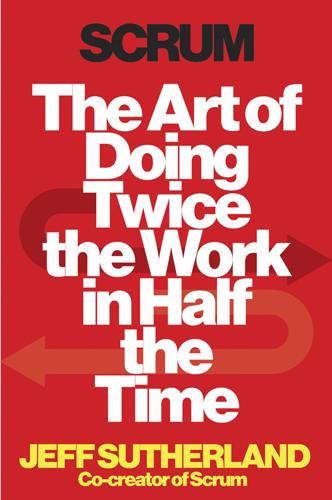
Scrum: The Art of Doing Twice the Work in Half the Time
by
Jeff Sutherland
and
Jj Sutherland
Published 29 Sep 2014
Science 328.5976 (2010): 360–63. 7. Wilson, Glenn. The Infomania Study. Issue brief, http://www.drglennwilson.com/Infomania_experiment_for_HP.doc. 8. Womack, James P., Daniel T. Jones, and Daniel Roos. The Machine That Changed the World: The Story of Lean Production (New York: HarperPerennial, 1991). 9. Avnaim-Pesso, Liora, Shai Danziger, and Jonathan Levav. “Extraneous Factors in Judicial Decisions.” Proceedings of the National Academy of Sciences of the United States of America. 108.17 (2011). 10. Vohs, K., R. Baumeister, J. Twenge, B. Schmeichel, D. Tice, and J. Crocker. Decision Fatigue Exhausts Self-Regulatory Resources—But So Does Accommodating to Unchosen Alternatives (2005).

The Behavioral Investor
by
Daniel Crosby
Published 15 Feb 2018
We want to think that we make decisions based on reason, ethics and time-tested principles, but research suggests that it may have just as much to do with what we’ve had to eat. Judge Jerome Frank’s seemingly sarcastic quip that “Justice is what the judge ate for breakfast.” may contain an uneasy kernel of truth, based on the work of Shai Danziger of Ben Gurion University. Danziger examined the results of 1,112 parole board hearings from Israeli prisons over a ten-month month period.22 The study found that prisoners begin the day, right after the judge has enjoyed breakfast, with a 65% chance of parole, but those odds begin to plummet shortly after, with the most Draconian rulings being handed out right before lunch.
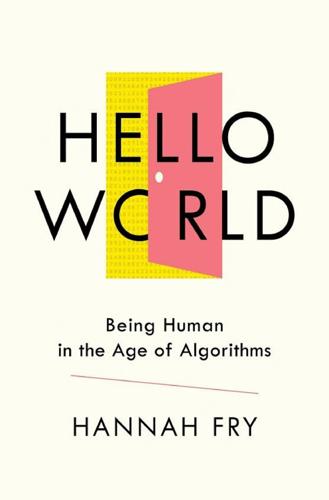
Hello World: Being Human in the Age of Algorithms
by
Hannah Fry
Published 17 Sep 2018
Kindly shared through personal communication with Mandeep Dhami. 59. Ibid. 60. Adam N. Glynn and Maya Sen, ‘Identifying judicial empathy: does having daughters cause judges to rule for women’s issues?’, American Journal of Political Science, vol. 59, no. 1, 2015, pp. 37–54, https://scholar.harvard.edu/files/msen/files/daughters.pdf. 61. Shai Danziger, Jonathan Levav and Liora Avnaim-Pesso, ‘Extraneous factors in judicial decisions’, Proceedings of the National Academy of Sciences of the United States of America, vol. 108, no. 17, 2011, pp. 6889–92, http://www.pnas.org/content/108/17/6889. 62. Keren Weinshall-Margel and John Shapard, ‘Overlooked factors in the analysis of parole decisions’, Proceedings of the National Academy of Sciences of the United States of America, vol. 108, no. 42, 2011, E833, http://www.pnas.org/content/108/42/E833.long. 63.
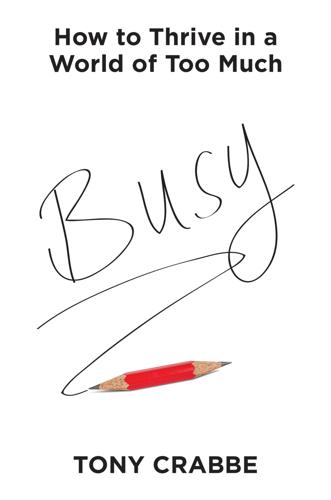
Busy
by
Tony Crabbe
Published 7 Jul 2015
To combat “whether or not,” simply ask yourself the following questions whenever you are considering saying “yes” to more work, activity or stimulation: • What am I giving up by making this choice? • What else could I do with the same amount of time or attention? Good Choices Take Energy Jonathan Levav, professor at the Stanford Graduate School of Business, and Shai Danziger, psychology professor at Tel Aviv University, reviewed more than a thousand parole decisions made by judges in the Israeli prison system. After hearing each case, judges decided whether to parole or not. In this situation, the tougher decision was to release, since the parole board needed to make a complex choice between the relative priorities of prisoner freedom, risk and cost.
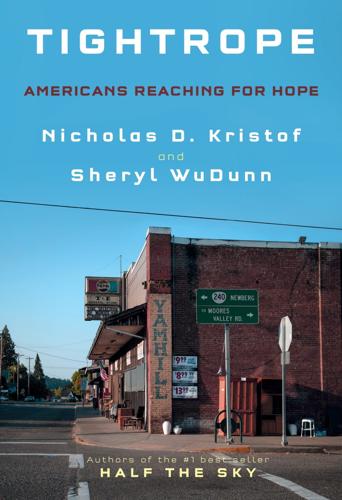
Tightrope: Americans Reaching for Hope
by
Nicholas D. Kristof
and
Sheryl Wudunn
Published 14 Jan 2020
Reeves, “Home Visiting Programs: An Early Test for the 114h Congress,” The Brookings Institution, February 5, 2015. See also National Home Visiting Resource Center, 2018 Home Visiting Yearbook, which says that evidence-based home visitation programs served 300,000 families in 2017, out of 18 million that would have benefited. Judges are more likely to rule against defendants: Shai Danziger, Jonathan Levav and Liora Avnaim-Pesso, “Extraneous Factors in Judicial Decisions,” PNAS, April 26, 2011. disproportionately applied to black defendants: Ozkan Eren and Naci Mocan, “Emotional Judges and Unlucky Juveniles,” American Economic Journal: Applied Economics 10, no. 3 (September 2016): 171–205.
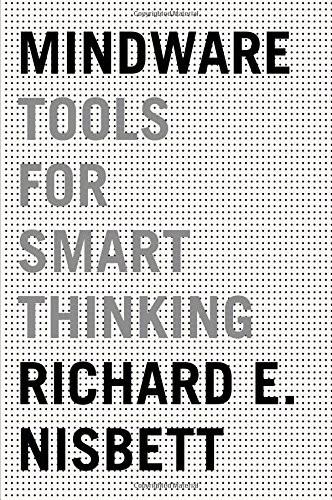
Mindware: Tools for Smart Thinking
by
Richard E. Nisbett
Published 17 Aug 2015
Current Directions in Psychological Science (2014): 1–7. College Board. “Student Descriptive Questionnaire.” Princeton, NJ: Educational Testing Service, 1976–77. CTV. “Infants’ Exposure to Germs Linked to Lower Allergy Risk.” http://www.ctvnews.ca/infant-s-exposure-to-germs-linked-to-lower-allergy-risk-1.720556. Danziger, Shai, J. Levav, and L. Avnaim-Pesso. “Extraneous Factors in Judicial Decisions.” Proceedings of the National Academy of Science 108 (2011): 6889–92. Darley, John M., and C. Daniel Batson. “From Jerusalem to Jericho: A Study of Situational and Dispositional Variables in Helping Behavior.” Journal of Personality and Social Psychology 27 (1973): 100–119.
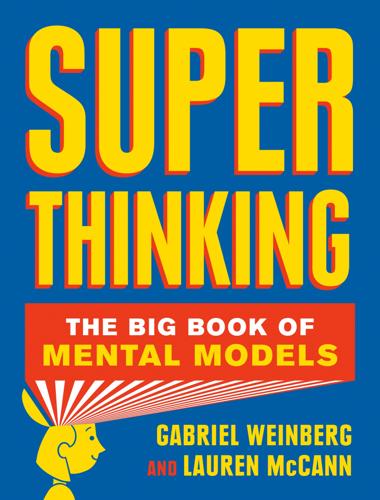
Super Thinking: The Big Book of Mental Models
by
Gabriel Weinberg
and
Lauren McCann
Published 17 Jun 2019
W., 104 business case, 207 butterfly effect, 121, 122, 125, 201 Butterfly Effect, The, 121 Butterworth, Brian, x buyout, leveraged, 79 bystander effect, 259 cable television, 69, 100, 106 Caesar, Julius, 244 calculus, 291 call your bluff, 238 cameras, 302–3, 308–10 campaign finance reform, 110 Campbell, Donald T., 49–50 Campbell’s law, 49–50 cancer: breast, 156–57, 160–61 clusters of, 145 lung, 133–34, 137 cap-and-trade systems, 42–43 capital, cost of, 76, 77, 179, 182 careers, 300–301 decisions about, 5–6, 57, 175–77, 201, 207, 296 design patterns and, 93 entry barriers and, 305 licensing and, 306–7 Carfax, 46 Cargill, Tom, 89 cargo cults, 315–16 caring personally, 263–64 car market, 46–47 Carrey, Jim, 229 carrot-and-stick model, 232 cascading failures, 120, 192 casinos, 220, 226 cast a wide net, 122 catalyst, 112–13, 115, 119 Catherine II, Empress, 228 causal loop diagrams, 192–93 causation, correlation and, 134, 135 cellphones, 116–17 center of gravity, 112 central limit theorem, 152–53, 163 central tendency, 147 chain reaction, viii, 114, 120 Challenger, 31–33 challenging directly, 263–64 change, 100–101, 112–13, 129 resistance to, 110–11 chaos, 124 balance between order and, 128 chaos theory, 121 chaotic systems, 120–21, 124, 125 Chatelier’s principle, 193–94 cheating, 50 Chekhov, Anton, 124 chess, 242 chilling effect, 52–54 China, 231, 276 choice, 62 paradox of, 62–63 Christensen, Clayton, 296, 297, 310 Cialdini, Robert, 215–17, 219–21 circle of competence, 317–18 climate change, 42, 55, 56, 104, 105, 183, 192 Clinton, Hillary, 70, 97 clustering illusion, 144–45 CNN, 220 Coase, Ronald, 42 Coase theorem, 42–43 cobra effect, 50–52 Coca-Cola, 305 cognitive dissonance, 27–29, 216 coin flips, 143–44, 154–55, 158–59 Cold War, 209, 235 collateral damage, 53–54, 231 collective intelligence, 205 collectivist versus individualist, in organizational culture, 274 college, 209–10 choice of, 58–60 rankings of, 50, 137 Collins, Jim, 109, 254 commandos, in organizations and projects, 253–54 commitment, 87–88 escalation of, 91 influence model of, 216, 220 commodities, 283 commons, 36–38, 43 Common Sense (Paine), 221–22 communication, high-context and low-context, 273–74 competence, circle of, 317–18 competition: and crossing the chasm, 312 moats and, 302–5 perfect, 283 regulatory capture and, 305 sustainable competitive advantage, 283, 285 complexity, complex systems, 185–86, 192, 194 diagrams and, 192–93 simulations and, 192–94 compound interest, 69, 85 Concorde fallacy, 91 conditional probability, 156 Confederate leaders, 113 confidence intervals, 154–56, 159 confidence level, 154, 155, 161 confirmation bias, 26–28, 33, 103, 159 conflict, 209, 226 arms races, 209–12, 214 game theory and, see game theory confounding factor, 134–35, 139 conjunction fallacy, 9–10 conscientiousness, 250 consensus, 202 consensus-contrarian matrix, 285–86, 290 consequence-conviction matrix, 265–66 consequences, 35 unintended, 35–36, 53–55, 57, 64–65, 192, 232 containment, 233, 237 contests, 35–36 context-switching, 71, 74 continental drift, 24–25, 289 contrarian-consensus matrix, 285–86, 290 Contrarian’s Guide to Leadership, The (Sample), 28 control group, 136 conventional wisdom, 5 convergent thinking, 203 conviction-consequence matrix, 265–66 cooperation, 215, 226 tit-for-tat, 214–15 correlations, 134, 135, 139 corruption, 307 Cortés, Hernán, 243–44 cost-benefit analysis, 177–86, 189, 194 Costco, 70 cost of capital, 76, 77, 179, 182 cost of doing business, 232 counterfactual thinking, 201, 272, 309–10 cramming, 83, 262 credible intervals, 159 crime, 16, 161, 231, 232 broken windows theory and, 235–36 Cringley, Robert X., 253 critical mass, viii–x, 114–15, 117, 119, 120, 129, 194, 308 critical thinking, 201 crossing the chasm, 311–12 crossing the Rubicon, 244 crowdsourcing, 203–6, 286 culture, 113, 273 organizational, 107–8, 113, 273–80, 293 customers, 300 development of, 294 personas for, 300 types of, 298–300 winner-take-most markets and, 308 Cutco, 217 Danziger, Shai, 63 dark patterns, 226–29 Potemkin villages, 228–29 Darley, John, 259 Darwin, Charles, 100, 101, 291 data, 130–31, 143, 146, 301 binary, 152 dredging of, 169–70 in graphs, see graphs mean in, 146, 149, 151 meta-analysis of, 172–73 outliers in, 148 streaks and clusters in, 144 variance in, 149 see also experiments; statistics dating, 8–10, 95 daycare center, 222–23 deadlines, 89 death, causes of, 17 death by a thousand cuts, 38 debate, 225 decisions, 1–2, 11, 31, 127, 129, 131–33, 175, 209 business case and, 207 choices and, 62–63 cost-benefit analysis in, 177–86, 189, 194 decision fatigue and, 63–64 decision tree in, 186–90, 194, 215 Eisenhower Decision Matrix, 72–74, 89, 124, 125 irreversible, 61–62, 223–24 opportunity cost and, 76–77, 80, 83, 179, 182, 188, 305 past, analyzing, 201, 271–72 pro-con list in, 175–78, 185, 189 reversible, 61–62 sequences of, 144 small, tyranny of, 38, 55 utilitarianism and, 189–90 Declaration of Independence, 222 deep work, 72, 76, 88, 278 default effect, 87–88 Defense, U.S.

Nexus: A Brief History of Information Networks From the Stone Age to AI
by
Yuval Noah Harari
Published 9 Sep 2024
Free Will and the Science of the Brain (London: Robinson, 2012); Fiery Cushman and Joshua Greene, “The Philosopher in the Theater,” in The Social Psychology of Morality: Exploring the Causes of Good and Evil, ed. Mario Mikulincer and Phillip R. Shaver (Washington, D.C.: APA Press, 2011), 33–50. 45. Shai Danziger, Jonathan Levav, and Liora Avnaim-Pesso, “Extraneous Factors in Judicial Decisions,” Proceedings of the National Academy of Sciences 108, no. 17 (2011): 6889–92; Keren Weinshall-Margel and John Shapard, “Overlooked Factors in the Analysis of Parole Decisions,” Proceedings of the National Academy of Sciences 108, no. 42 (2011), article E833. 46.
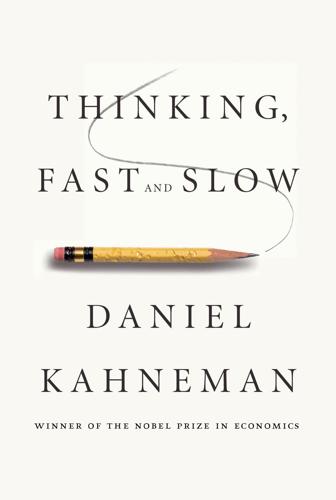
Thinking, Fast and Slow
by
Daniel Kahneman
Published 24 Oct 2011
Gailliot et al., “Self-Control Relies on Glucose as a Limited Energy Source: Willpower Is More Than a Metaphor,” Journal of Personality and Social Psychology 92 (2007): 325–36. Matthew T. Gailliot and Roy F. Baumeister, “The Physiology of Willpower: Linking Blood Glucose to Self-Control,” Personality and Social Psychology Review 11 (2007): 303–27. ego depletion: Gailliot, “Self-Control Relies on Glucose as a Limited Energy Source.” depletion effects in judgment: Shai Danziger, Jonathan Levav, and Liora Avnaim-Pesso, “Extraneous Factors in Judicial Decisions,” PNAS 108 (2011): 6889–92. intuitive—incorrect—answer: Shane Frederick, “Cognitive Reflection and Decision Making,” Journal of Economic Perspectives 19 (2005): 25–42. syllogism as valid: This systematic error is known as the belief bias.

How Emotions Are Made: The New Science of the Mind and Brain
by
Lisa Feldman Barrett
Published 6 Mar 2017
Dantzer, Robert, Jan-Pieter Konsman, Rose-Marie Bluthé, and Keith W. Kelley. 2000. “Neural and Humoral Pathways of Communication from the Immune System to the Brain: Parallel or Convergent?” Autonomic Neuroscience 85 (1): 60–65. Danziger, Kurt. 1997. Naming the Mind: How Psychology Found Its Language. London: Sage. Danziger, Shai, Jonathan Levav, and Liora Avnaim-Pesso. 2011. “Extraneous Factors in Judicial Decisions.” Proceedings of the National Academy of Sciences 108 (17): 6889–6892. Darwin, Charles. (1859) 2003. On the Origin of Species. Facsimile edition. Cambridge, MA: Harvard University Press. ———. (1871) 2004.